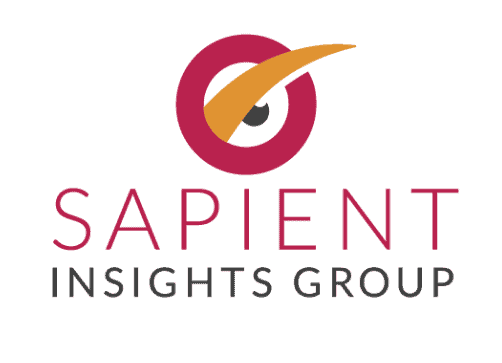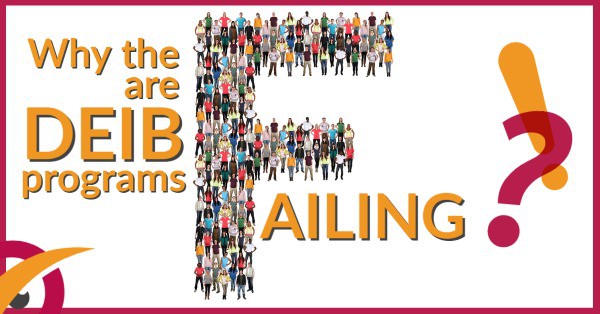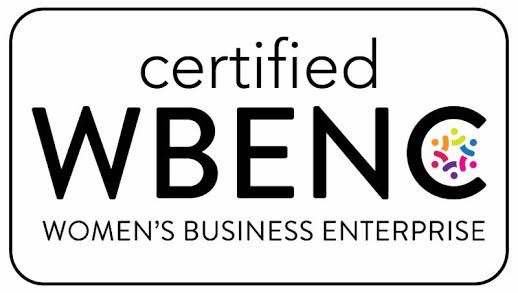It’s complex – that’s why. Not complicated, but Diversity. Equity. Inclusion. Belonging. (DEIB) is undoubtedly challenging. The more we try to convince ourselves that if we are all “just good humans,” inclusion should happen organically, the harder it seems to be to make progress.
Over the last 30 years, I’ve heard numerous well-intended suggestions of simple solutions. Some might suggest the answer is hosting a dinner party and inviting people who don’t look like you, subtly implying that inclusion will magically happen over dessert. I don’t know about you, but I wasn’t hosting many dinner parties even before the global pandemic. When I do have a diverse group of friends over, we don’t typically spend the evening talking about our lived experiences.
I also often hear oversimplifications of DEIB in analogies like, “Diversity is about being invited to the party; inclusion is being asked to dance.” The intent behind this analogy is to inspire people to take action. Still, the impact is that we aren’t genuinely describing the steps that need to happen to make corporations inclusive. We don’t even play out what happens in our fictitious dancing analogy – what if you have 100 people in the room? What music could you play that would get everyone on the dance floor? What about those with disabilities who either can’t hear the music directly or dance without accommodations?
If you put the speakers on the ground, people can feel the beat and there are many solutions for physical accommodations. But first, we need to recognize that these considerations must be addressed when hosting an inclusive dance party. This leads us back to the point that it’s never about “just” doing one thing, which is why we say inclusion is complex but not complicated.
Why do we find it hard to admit that pursuing diversity, equity, inclusion, and belonging can be complex? Each time we imply “this is simple,” we fail to address the 5 F’s that are driving the failure of most DEIB programs:
- Fear of saying the wrong thing at the wrong time. Instead, we say nothing. Over the last 16 months, we have hosted many virtual focus groups, and “fear” is the most common answer for why individuals don’t engage in conversations about inclusion and more specifically systemic racism.
- Fatigue (or frustration) over the lack of progress. Let’s be honest, if someone says, “82% of companies have been doing *this* to improve their diversity and inclusion,” your response should be, so we aren’t doing that, right? We should move away from emulating common practices and instead put our efforts behind promising ones.
- Facts to inform decision-making. We are striving for accountability, but how can leaders, at every level, hold themselves accountable without information? Facts about the current state are frequently not shared internally, so instead, leaders must act on their gut or anecdotal information. Critical workforce data about hiring, promotion, and retention rates will not only help inform practical recommendations but will allow us to focus our efforts on the highest impact activities.
- Familiarity is the most common bias that we fail to recognize as a problem. Instead, we continue to sponsor, mentor, hire, and promote people like us. We call it a “gut feeling” or “culture fit,” but really, it boils down to trust. We trust ourselves first, and we trust those who remind us of ourselves second. This trust isn’t always a negative, but it does perpetuate a homogenous workforce.
- Foundational elements of a solid DEIB plan are skipped in favor of symbolic acts that quickly signal to our board of directors, shareholders, and employees that we are committed to change. These symbolic acts can serve a good purpose, but don’t skip the foundational elements even if they aren’t the things that win you the awards.
I believe deeply in creating what I call the “Foundation for Inclusion.” Below are the foundational elements of a good DEIB Plan that are often missed.
First, every member of the leadership team, not just the CEO or Chief People Officer, should be able to articulate why they care about diversity, equity and inclusion. And yes, it should go beyond ‘I have a daughter.’ For real change to occur, leaders should align on the definitions and business impact that will resonate and inspire their workforce.
Here is an example of clear definitions that can be measured:
- Diversity is when our organization reflects the various identities of our customer base and when our leadership team mirrors our employee base. In this example, you can measure representation through workforce data and compare this to the desired demographics of your customer base. This is the most common metric measured by companies. Still, it can be frustrating because overall representation doesn’t always move fast, especially for industries with low turnover or hiring growth. A promising practice is to add more immediate goals beyond representation, with great examples by Dell measuring the inspiration of their leaders or Google looking deeper at the intersectionality of their hiring and exit rates by demographic groups.
- Inclusion is the result of certain behaviors and conditions that exist within an organization. You can measure these behaviors through employee surveys or focus groups. I like this metric because you can measure the existence of behaviors all the way to the manager level giving you insight into which managers are “inclusive.” For example, you can ask the question, “does my manager provide timely and actionable feedback?” A promising practice is to provide “inclusion scores” to each people manager which would analyze the results, by demographic group, to understand if feedback is equitable.
- Equity is when individuals are given the support they need for equal access. You can measure equitable hiring, promotion, and retention rates across demographic groups. Unlike slow overall changes to representation, changes in equitable promotion rates can happen fast. A promising practice is to set goals to close any gaps in promotion rates within a year – this is a very achievable goal.
Second, always state the business impact associated with DEIB. Many leaders avoid discussing the potential business impact to their company as they want their efforts to be considered “the right thing to do.” Leaders will often start a keynote by saying something like, “I care about diversity because I have a daughter, a gay best friend, a Black college roommate, or a family member who is disabled.” These statements make the speaker seem authentic and demonstrates their personal passion; however, if this is the only rationale for why someone, without any lived marginalized experiences, should care about DEIB, then we will only make progress when all of our people managers have had the experience of a Black college roommate, a gay best friend, or a disabled family member.
Third, focus on behaviors. At Sapient Insights Group, we honor the phrase, “You can’t ask for the hearts and minds of your employees, but you can ask them to exhibit certain behaviors.” People often talk about inclusion as if it is the behavior. It’s not the behavior; it’s the feeling that someone has when inclusive behaviors are present (or not). A solid foundational step is to identify the most important inclusive behaviors you expect from your managers, describe those behaviors, and measure their existence in your employee survey.
Once we have identified the behaviors we expect and articulated the business impact, we can measure success beyond representation. Sticking with the behavior example above of providing actionable and timely feedback to all employees. In that case, we can start by describing what it means to give feedback, setting clear expectations of how often we expect feedback to be given, and then measuring the behavior’s existence through employee surveys. From here, we can measure if certain demographic groups are getting more or less actionable or timely feedback and address those hot spots.
DEIB is like building a house. You shouldn’t have all the windows and light fixtures delivered when you haven’t yet poured the foundation – you have nowhere to put these supplies until you need them. And you wouldn’t pour the foundation of your house until you have decided if you want a basement. We get it – the light fixtures are a lot more exciting, and they will get a lot more praise than your foundation, but don’t skip this step. Spend some time outlining what you want, and then start building.
If your company needs assistance with implementing the foundational elements of a good DEIB Plan, I’d be happy to help. Schedule a call with us today.


